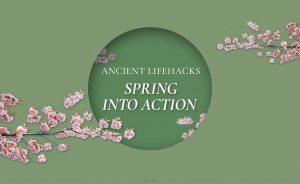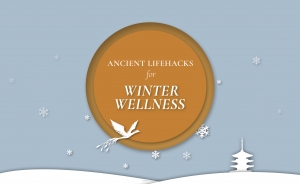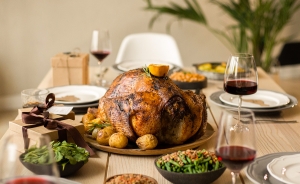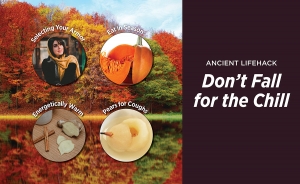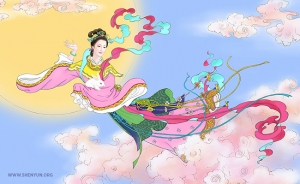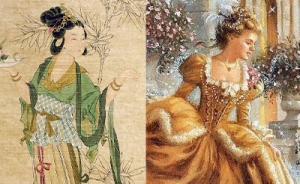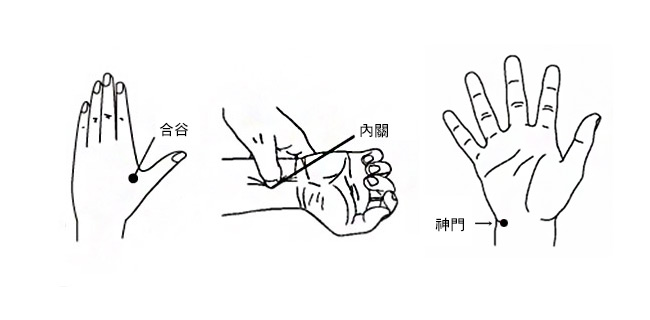
Ancient Chinese Lifehack: Acupressure
The Ancient Lifehack series draws upon the wisdom of 5,000 years of Chinese civilization for inspiration and ideas we can apply today.
One clear spring morning, our company arrived at the Théâtre du Passage in Switzerland’s Neuchâtel. We had warm-up class backstage before enjoying a charming Swiss-Chinese fusion lunch. Everything was normal as could be.
Then in the afternoon, I was on side stage left waiting to go on for spacing. We got our cue and began to move. Suddenly...
“Ah, Betty, you’re bleeding!” someone said. And I was. My nose was letting out a bloody torrent. Obviously, a dancer gushing out vital fluids before opening night is not a scene to be ignored. In no time, the local staff had me pinned down on a couch.
“I know the pressure point!” more than one lady insisted.
“It’s the ring finger!”
“No, middle!”
“But on the opposite side!"
“Neck! Neck!"
Soon I was being pressed in many places. After some dramatic-yet-comical confusion, the bleeding did stop. And it made me wonder… which point did the trick?
Another Ancient Art
In many ways, traditional Chinese medicine and modern Western science are worlds apart. Chinese medicine believes the universe and human body are interrelated. The universe is a macroscopic manifestation of the body and, inversely, microscopic embodiments of the universe exist inside our bodies.
The body is seen as a holistic entity instead of separate systems (organs, skeletal, nervous systems, etc). Vital energy (qi) flows through pathways (meridians), which run along our entire body to regulate our entire person.
Without CAT scans, surgical robots, or magnetic resonance, ancient treatments were hands-on. With acupressure, key points are massaged to release blocked qi throughout our energy channels. Proper circulation keeps us happy, healthy, and whole. Today, scientists link acupressure with bioelectrical impulses, endorphins, and pain-signal transmissions.
Like all traditional Chinese disciplines, acupressure has layers of deeper meaning. Every pressure point has a name denoting its significance. But when Western nomenclature identifies them with numbers and letters, both the points’ surface meaning and deeper layers are lost. Here are a few examples.
Useful Pointers
While traveling, which we do about half the year and many of you might also do regularly, sometimes it’s inevitable to feel a bit worse for wear. How would the ancients have handled their aches?
'Union Valley' – The All-Purpose Booster (合谷)
Where: On the back of your hand, between the bones leading to the thumb and forefinger, above the webbing.
Helps: stuffy or runny nose, headache, sore throat, sneezing and allergy symptoms, fever and cold symptoms; relieves stress, relaxes muscles, strengthens defense system. (*Do not massage during pregnancy, can induce labor.)
‘Foot Three Miles’ – Digestion (足三里)
Where: Four finger-widths below the knee, outside the shinbone. A muscle appears when you flex your ankle.
Helps: Soldiers used to massage this point after every three miles of marching for general well-being and energy reinforcement. Helps with abdominal pain and digestion disorders. Harmonizes the stomach, spleen, and intestines. Promotes blood and qi circulation.
‘Inner Pass’ - Motion sickness (內關)
Where: With the palm facing up, two finger-widths down from the center of the wrist crease.
Helps: Nausea from motion sickness, anxiety, stomach bugs, morning sickness, etc.
‘Spirit Gate’ - Insomnia (神門)
Where: Palm up, in the depression on the pinky side of the wrist.
Helps: Insomnia caused by nerves, overactive thoughts, and overexcitement. Relaxes the heart and spirit.
So, what about nosebleeds? Since the body is such a connected whole, there are numerous points to combat most ailments, and points also work together. Multiple points, from head to toe, help stop nosebleeds. Here are four of them:
‘Bright Eyes’ (睛明 ) - Also helps with eye discomforts. Where: Hollow inside and above the tear duct.
‘Maximum Opening’ (孔最) - Together with ‘Welcome Fragrance’ (迎香) also alleviates sinus issues. Where: seven finger-widths above the wrist crease. Welcome Fragrance can be found outside the nostril on the smile line.
‘Celestial Residence’ (天府) - Also for lung ailments. Where: three finger-widths below the armpit, between the shoulder and bicep muscles.
‘Hidden White’ (隱白) - Also for regulating blood. Where: inside the inner corner of the big toenail.
Venerable Wisdom
Perhaps we can all draw on ancient wisdom to benefit our lives today. It might seem paradoxical to think the ancients knew something we don’t, but if we look beyond our sleek gadgets, we can recognize that sometimes ancient ways, though seemingly simpler, can have their practicality and effectiveness.
Warning: You can give these spots a try, but don’t massage too vigorously. These are only pointers from traditional Chinese culture. They are not an alternative to getting necessary medical attention and are only raised here as an interesting topic, not as medical advice.

Betty Wang
Contributing writer
05 de abril de 2015


